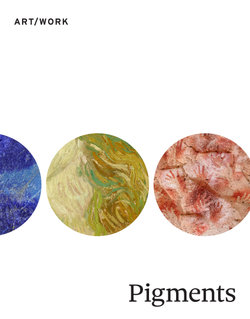Over the millennia, humans have used pigments to decorate, narrate, and instruct. Charred bone, ground earth, stones, bugs, and blood were the first pigments.
New pigments were manufactured by simple processes such as corrosion and calcination until the Industrial Revolution introduced colours outside the spectrum of the natural world. Pigments brings together leading art historians and conservators to trace the history of the materials used to create colour and their invention across diverse cultures and time periods.
This richly illustrated book features incisive historical essays and case studies that shed light on the many forms of pigments — the organic and inorganic; the edible and the toxic; and those that are more precious than gold. It shows how pigments were as central to the earliest art forms and global trade networks as they are to commerce, ornamentation, and artistic expression today.
The book reveals the innate instability and mutability of most pigments and discusses how few artworks or objects look as they did when they were first created.
From cave paintings to contemporary art, Pigments demonstrates how a material understanding of colour opens new perspectives on visual culture and the history of art.









Share This Book: